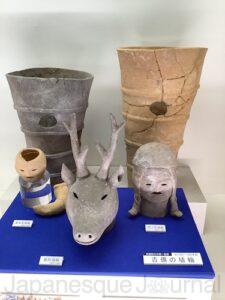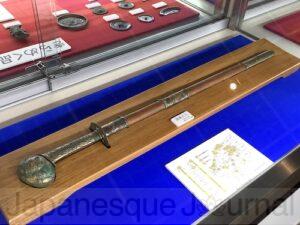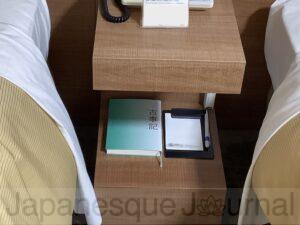Introduction
During my visit to the Kibi Ancient Cultural Center in Okayama Prefecture, Japan, I explored its permanent exhibition. I’ll share what I learned about the center’s display of the history and archaeological sites 10,000 to 200 years ago. I also focus on why the Kibi region prospered during the Yayoi to Kofun periods. You can see both permanent and special exhibitions for free. Check out the report on the special exhibitions here on my blog. Also, see here for the English/Mandarin/Korean translated versions of the Kibi Ancient Cultural Center in Okayama Prefecture’s site.
The Permanent Exhibition
The permanent exhibition showcases the history and archaeological sites from the Jomon (BC 8000-2000) to the Edo period (AC 1600〜1868) of the Kibi region. Kibi is a old name refers to the entire area of Okayama Prefecture and the eastern part of Hiroshima Prefecture. The exhibition highlights the artifacts from the Jomon, Yayoi, and Kofun periods. The first floor of the building houses the exhibition. It is not very large but is packed with fascinating artifacts and information.
The Three Reasons for the Prosperity of Kibi Region
The permanent exhibition exhibits three main factors that contributed to the Kibi region’s prosperity during the Yayoi to Kofun periods.
Sue Ware
The Kibi was blessed with abundant red soil, an excellent clay material for pottery, and a vast supply of trees suitable for fuel to operate kilns. Moreover, the region had contact with the Korean Peninsula from ancient times, and immigrants passed down excellent techniques. For this reason, people can make high-quality pottery since ancient times. The area around Bizen City and Seto City was a thriving pottery production region that has been producing pottery historically. The regions still produce famous pottery known as Bizen ware (Bizen-yaki; 備前焼).




Salt Making
Thanks to the presence of the sea and a plentiful supply of trees, Kibi people can perform salt production. High-quality salt was valuable during the Yayoi to Kofun periods. Interestingly, the trees used for salt-making and pottery were taken from different areas to prevent conflict between the two industries. Archaeological sites indicate that kilns used for pottery were placed away from the coastlines used for salt-making.

Iron Making
The Kibi region was rich in iron ore and sand iron, essential raw materials for iron-making. A Heian period song collection poem reads, “Magane fuku Kibi” meaning “Kibi, where iron is blown.” Of course, it indicates that the Kibi region was known as a place for iron production. There were many iron production sites throughout the entire Okayama prefecture, including the northern region. Additionally, the Kibi region accepted immigrants, allowing the continent’s advanced iron-making technology to spread quickly. Iron-making technology had significant benefits, such as producing weapons, riding equipment, and farming tools.
In summary, the Kibi region, which possessed these three elements, was a very powerful area. So the Kibi kingdom was even allowed to build enormous keyhole-shaped tombs (前方後円墳) of the same style and size as those used by the Yamato court. The Tsukuri-yama Kofun (造山古墳) is representative example of the massive tombs in the Kibi region.
But the Kibi became too powerful and the Yamato court started to view them with suspicion. In 463 AD, a civil war broke out between the Kibi kingdom and the Yamato court. After that, Kibi did not build any more large tombs like those of the Yamato court. By 713 AD, the powerful Kibi kingdom had been divided into four small territories and weakened.
The Kibi region from 14000 BC to 300 AD
Also, artifacts from the Japan’s Paleolithic era (40,000 BC to around 14,000 BC) to the Yayoi period (300 BC to 300 AD) are on display. Let me introduce some of the interesting items I found at the exhibition.


In the Yayoi period, rice cultivation began. In festivals praying for a good harvest, they use bronze bells and swords. A big bronze bell decorated with red paint and patterns were unearthed from Takatsuka ruins (高塚遺跡). It was made around the 1st century BC and is designated as an important cultural property of the prefecture.

The Kofun Period
The most prominently displayed artifacts were those from the Kofun period, which were extremely interesting. The Kofun period corresponds to approximately the 3rd to 7th centuries.
Pottery coffins excavated from a Kofun.

Haniwa and other burial goods found in the kofun.









Finally, the walls of Kinojo (鬼ノ城), a mountain castle built in the late 7th century, is on display. After the Battle of Baekgang, the Yamato court was wary of Silla. So they built mountain castles in various parts of western Japan. There is a theory that Kinojo was one of them. The castle’s walls utilize the rammed earth technique (版築; Han-Chiku). It was developed in China, and was transmitted to Japan through the Korean Peninsula. It was one of the crucial technologies introduced from the continent. A part of the actual peeled-off wall from the wooden wall was exhibited and had great value to see!


Conclusion
The Kibi Ancient Cultural Center’s permanent exhibition provides insights into the history and archaeological sites of the Kibi region. Three significant factors contributed to the region’s prosperity during the Yayoi to Kofun periods, namely Sue ware, salt-making, and iron-making. These industries have continued to thrive in the area and contribute to the region’s cultural heritage.
